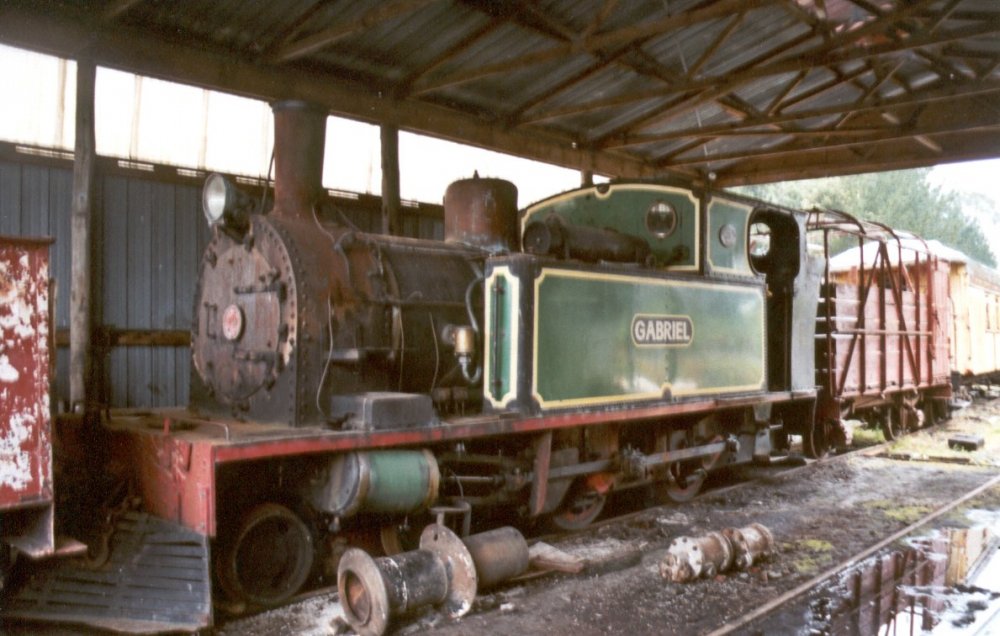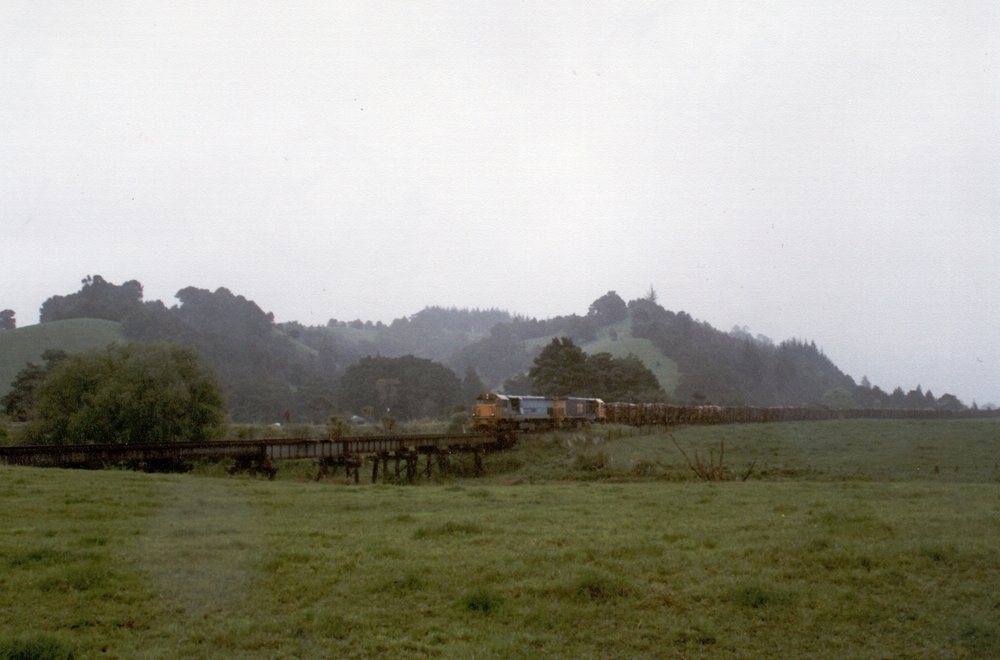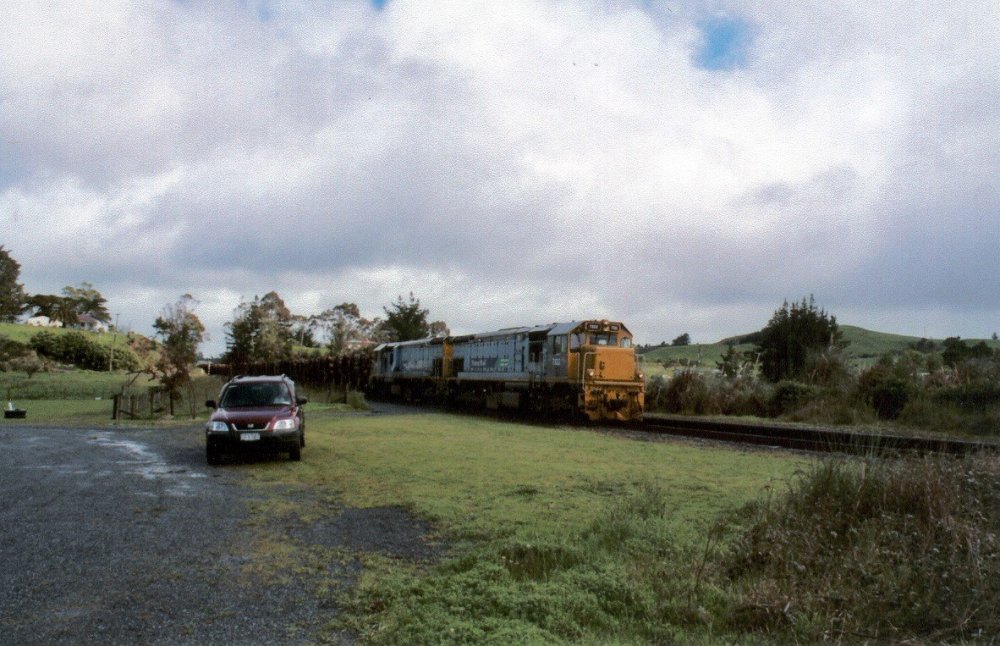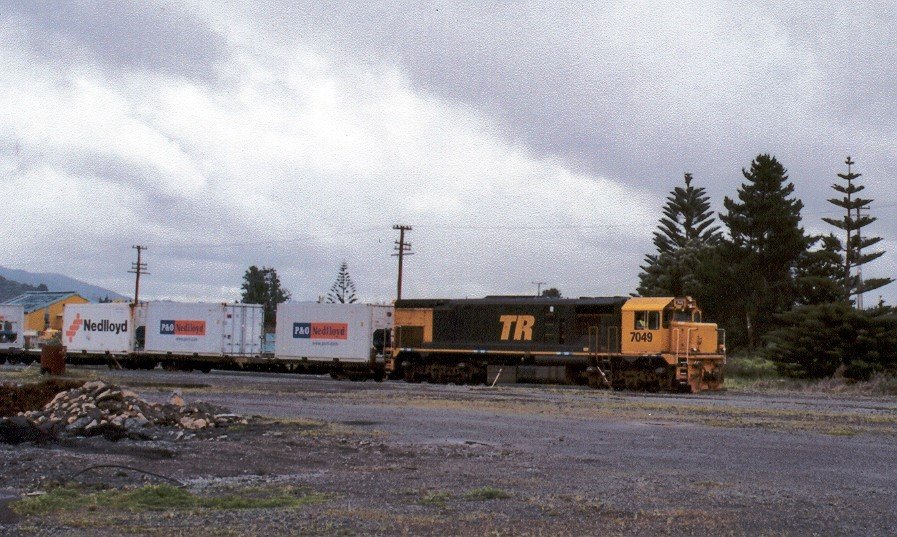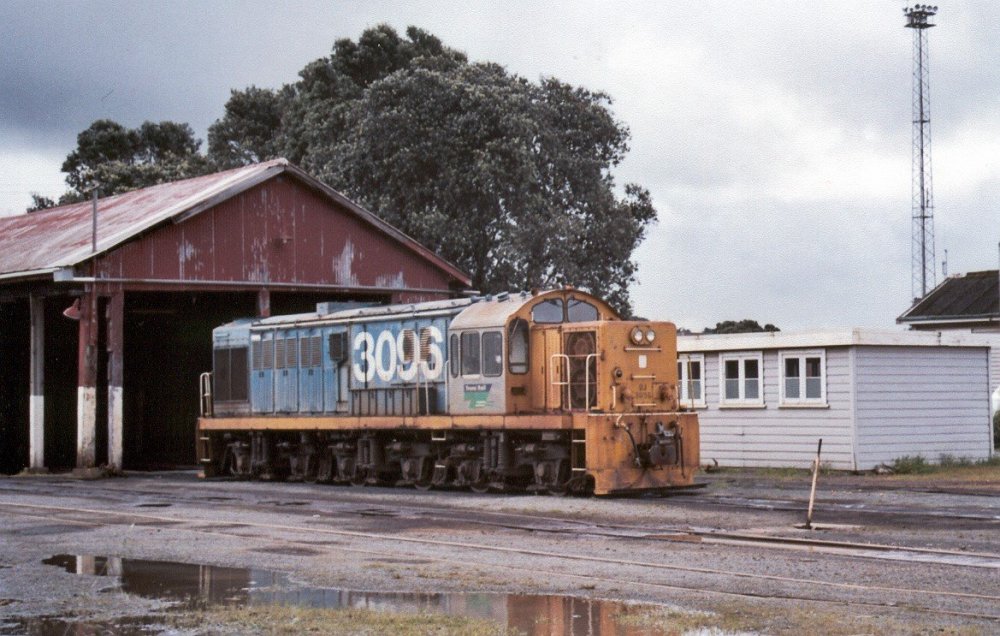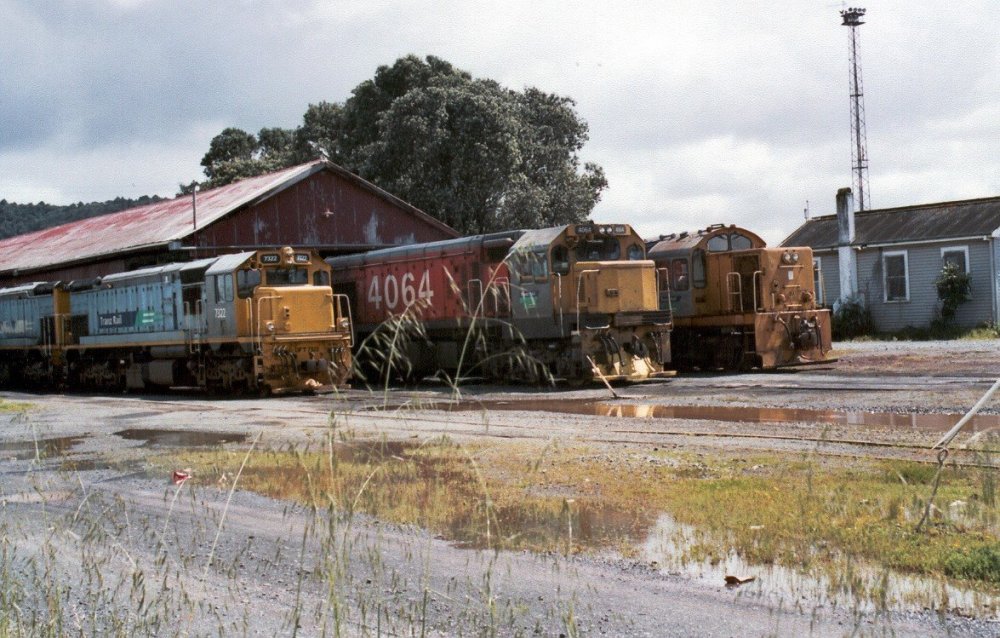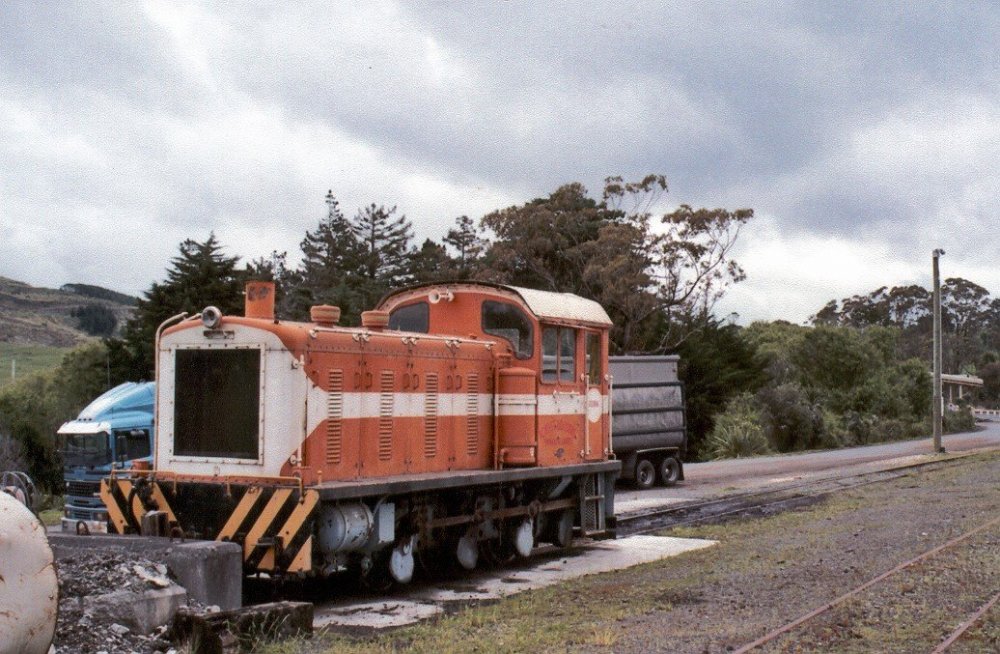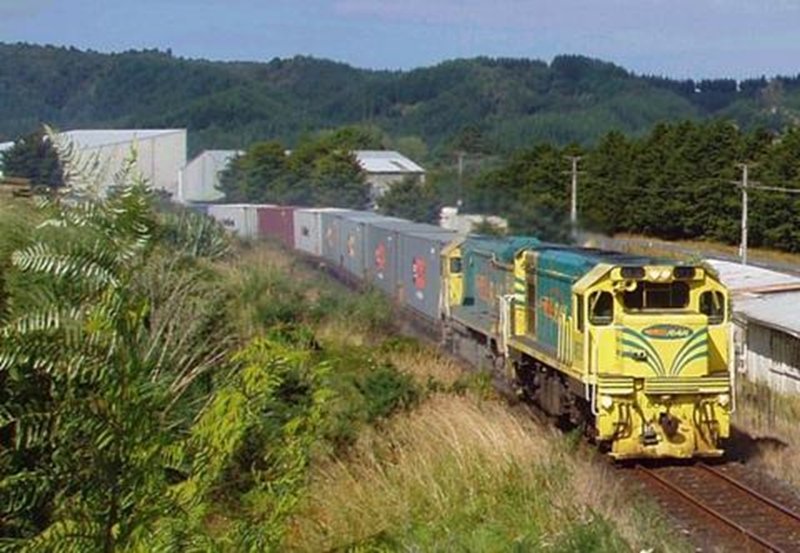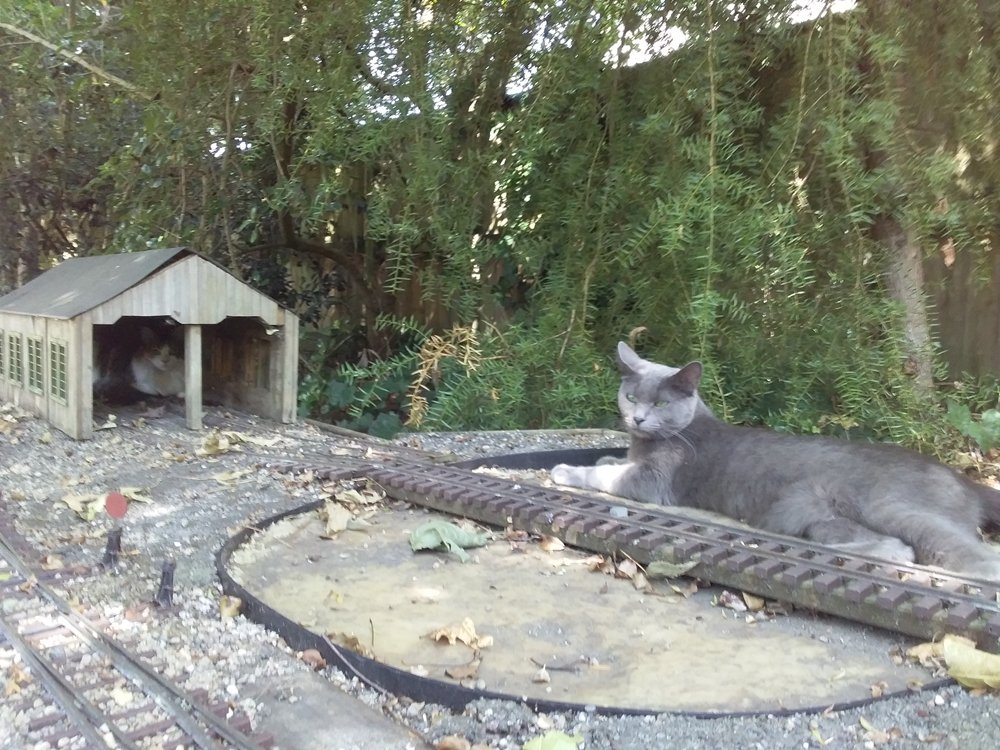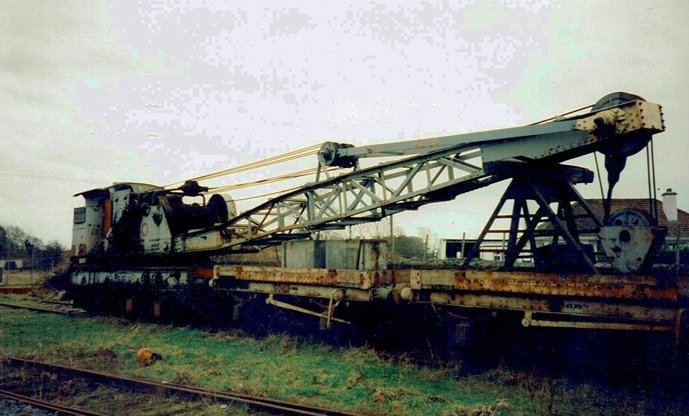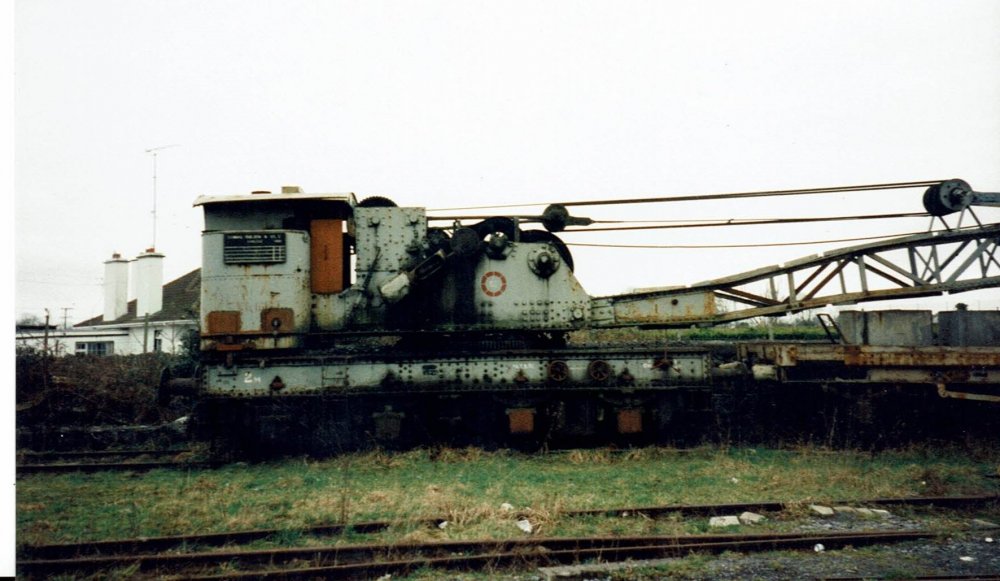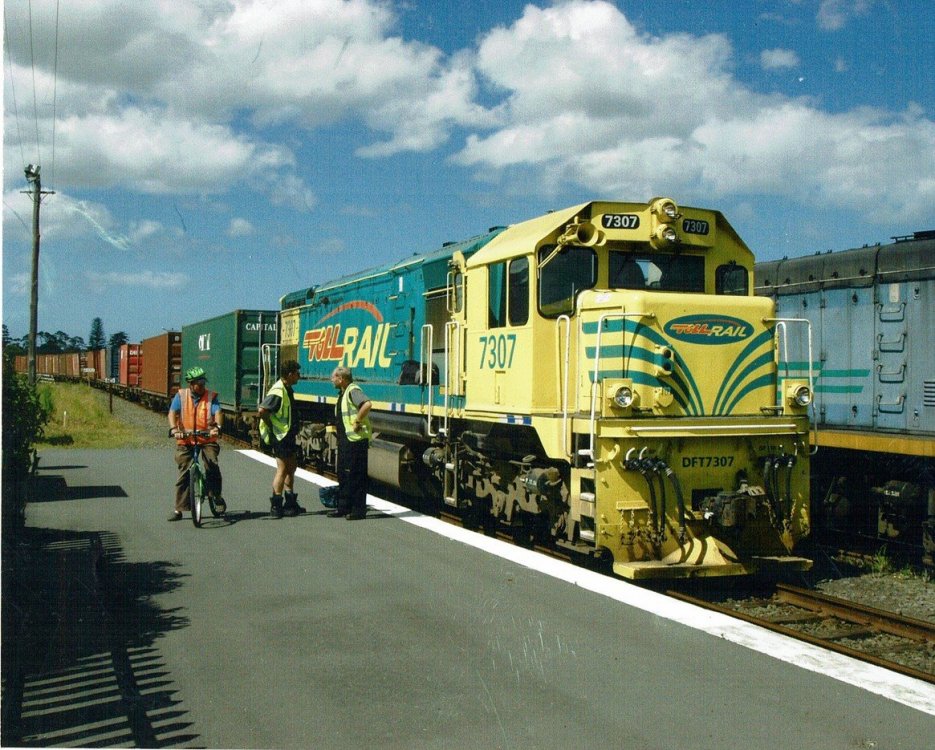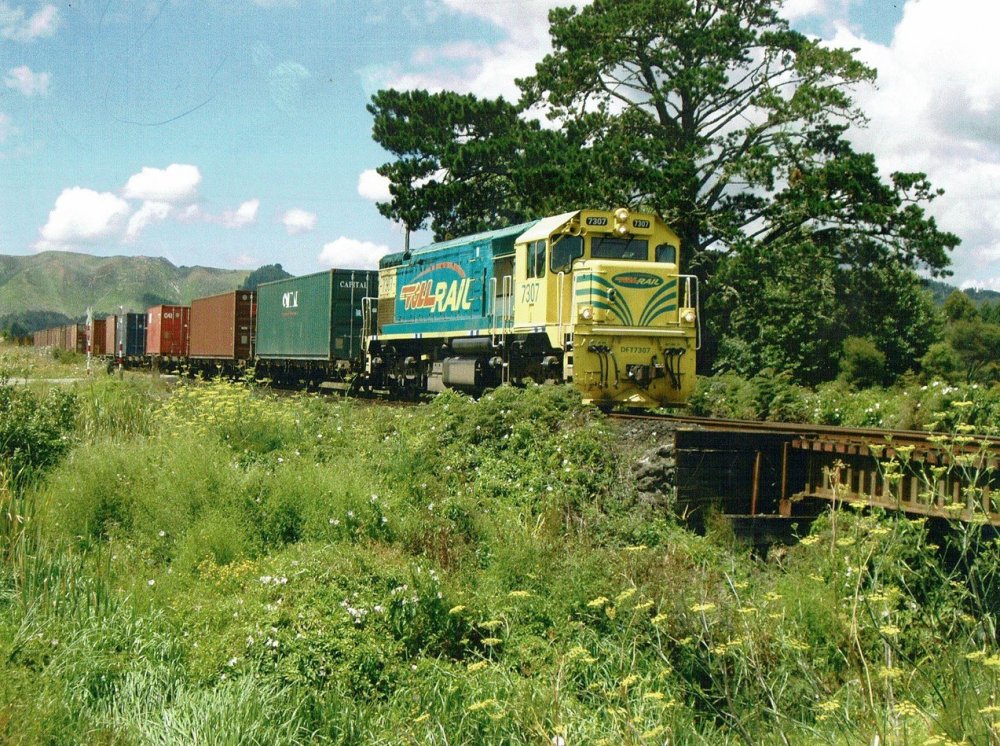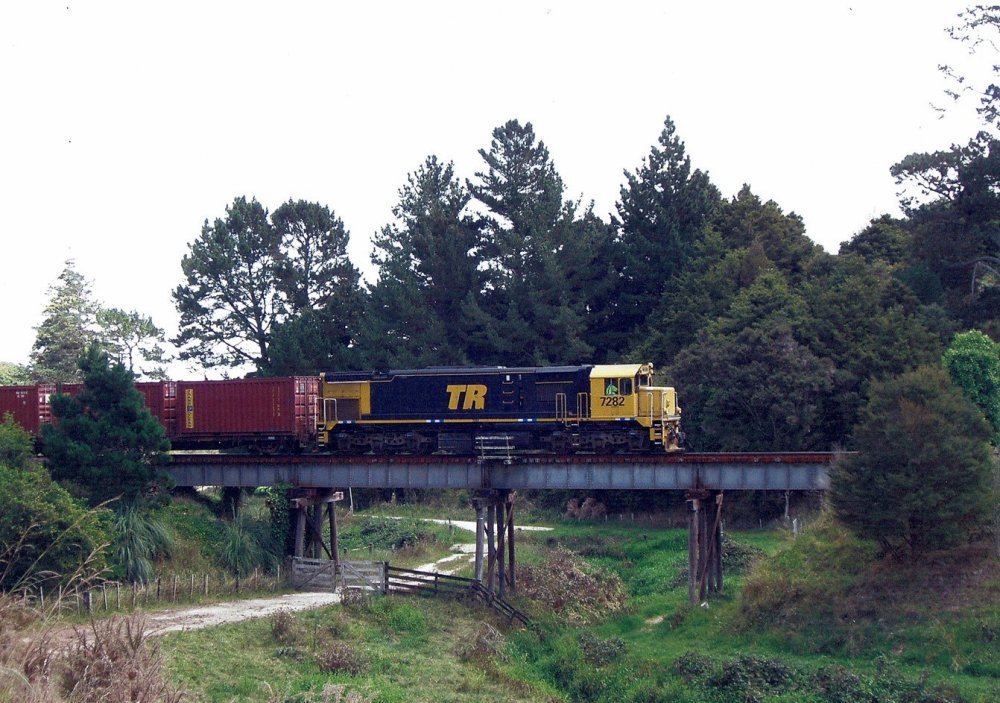-
Posts
4,894 -
Joined
-
Last visited
-
Days Won
119
Content Type
Profiles
Forums
Events
Gallery
Blogs
Community Map
Everything posted by Mayner
-
The "Silver" Laminate panels were unpainted aluminium rather than stainless steel and did'nt stand a chance against the Irish weather, diesel fumes, coal smoke and track dirt/brake dust and tarnished pretty quickly. I used Tayima AS12 "Bare Metal Silver" to represent a new ex-works aluminium coach but I would not attempt to weather one.
-
The GSR wooden and Bredin coaches shared a standard 60' steel underframe both types of coaches were of traditional timber frame construction. 2980 basically is a Bredin coach with some of the doors and windows blanked out and mail van doors added, traditional timber frame stock was much simpler to modify for different uses compared with more modern steel or aluminium bodied stock. The 1st couple of batches of CIE built coaches were similar in design and construction to the 1930s Bredin stock on a welded steel underframe with GSR pattern bogies an included Open Thirds, Buffet Cars to run with the AEC railcar sets, together with side corridor , Composite and Third Class coaches which were based on the pre-War stock. The situation gets a little complicated as the latter batches of these coaches including Buffet cars and Side Corridor Thirds were built on Bulleid Triangulated underframes and Commonwealth Bogies. To complicate things further early Buffet Cars & the remaining pair of GSWR Buffet cars received B4 bogies following the introduction of the Craven coaches in the 1960s!
-
A single 35T capacity steam crane would struggle to safely lift a long object like a coach or bridge beam, usually two cranes are used in a "tandem lift" for such lifts http://catalogue.nli.ie/Record/vtls000304303 The maximum safe working load of a railway steam crane is subject to the angle of the jib with a maximum lift capacity with a near vertical jib, with reduced capacity at shallower angles . I found this out the hard way when I first hired a mobile crane on a construction site, fortunately the hire company rep insisted on visiting the site before supplying the crane. Fortunately the lift was a success and I got to play with all sorts of construction cranes
-
The 2979 series TPOs were converted from GSR Bredin coaches, probably converted after CIE stopped non-stopped mail bag exchange at speed. The underframe truss arrangement is the main spotting difference between GSR & CIE Bredin coaches. The GSR used the traditional arrangement with a riveted underframe with truss rods and adjustable turnbuckle tensioners while CIE used a welded underframe with angle trusses. Interestingly CIE have fitted roller bearing axle boxes to the GSR bogies.
-
The C&L breakdown crane was "removed" in 1944 (Cavan & Leitrim Railway PJ Flannigan Pan paperback edition) The crane behind 2L looks like a good yard hand crane. Fantastic Ulster Folk & Transport restoration of Kathleen & Coach No 5 https://www.nmni.com/collections/highlight-tours/all-aboard
-
The Cavan & Leitrim had a hand operated Cowans & Sheldon "accident crane" with a wooden jib. Apparently although a travelling crane it seldom left its resting place in Ballinamore & was used soley for re-tyreing loco wheels. A lot of re-railing work on both the narrow and broad gauge would have been done by jacking & packing with sleepers and screw jacks. Smaller companies like the SLNCR and Cork Bandon & South Coast carried re-railing jacks on the locos. In Great Britain many of the "Colonel Stephens" lines had hand operated War Surplus brake down cranes which were seldom used. The pair of breakdown cranes supplied to the Festiniog narrow gauge were notorious as they were too big to fit through the bridges and tunnels on the line.
-
The Mallow crane appears to be ex-GSWR from the Great Southern Railway Preservation site in Mallow, the Tuam crane 2m was ex-MGWR last used as the Athlone breakdown crane Both the GSWR & MGWR cranes appear to be the same type and may be "War Surplus" and may have been snapped up as a bargain by the Irish Railways or possibly in lieu of cash as part of the Governments Settlement with the Irish Railway companies. Although the Mallow crane builders date is 1920 it may have been ordered by the Government before the ending of hostilities or like the Woolwich Moguls to maintain employment as industry wound down from a war footing at the end of the war. The wagons that ran with the cranes were known as match trucks both on standard Irish wagon underframes, interestingly the match trucks used with the ex-GSWR crane have the older style of wooden underframe with a hand brake on one side while those with the Midland crane have the more modern steel framed underframes most likely with a handbrake on each side. The Ratio 574 P.W. wagons set included a very nice pair of rail wagons and a pair of ballast wagons all wooden underframed which were very close in appearance to the GSWR wagons including single the option of assembly with Irish style single lever brake gear https://www.ebay.co.uk/p/1641654330?iid=112030705153 Interesting to see how much was achieved by GSRPS volunteers in establishing the restoration site at Mallow, restoring rolling stock and an attempt to re-open the Fenit Branch so near but so far. DERAILED. Hopefully some day you will publish a book about your experiences in Irish railway preservation.
-
Anthracite a slow burning almost smokeless coal which was at one time used in steam locos on the Anthracite Railroads in the North East United States in addition to steel making, industrial and domestic use. One of my grandfathers was a driver on the Midland up to the early 30s, an American relative could not understand why Irish trains were so smokey . Like Phoebe Snow our relative rode on "smokeless" trains on a road of Anthracite in America https://en.wikipedia.org/wiki/Phoebe_Snow_(character)#/media/File:Phoebe-Snow-ditty.JPG https://en.wikipedia.org/wiki/Camelback_locomotive, I am not sure how an Irish locomotive crew would have reacted to a Camelback Its likely the Anthracite from the Leinster coalfield was used mainly for domestic and industrial use in Ireland, it would have been difficult for the Irish mines to compete with South Wales anthracite particularly after the coalfield went into serious decline after WW1.
- 5 replies
-
- 1
-

-
- coal
- castlecomer
-
(and 2 more)
Tagged with:
-
The UTA & NIR used their MPD & 70 Class railcars as locomotives and used them to haul the overnight North Wall-Derry goods between Lisburn and Waterside. https://www.flickr.com/photos/152343870@N07/40139251611/
-

Memories of the North Auckland Line in 2005-6
Mayner replied to Mayner's topic in Photos & Videos of the Prototype
I came across these photos taken in Oct-November 2005 (Spring) during my first trip up North before gricing in the Helensville Area. The photos were taken on the line that at one time linked Whangaeri with Opua a small port in the Bay of Islands and Okaihau the most northerly railway station in New Zealand, the line lost its passenger service in 1976 when the Whangaeri-Okaihau mixed train (Goods with Car) was withdrawn, the line to Opua had lost its passenger services in the 1950s. In 2005 log trains operated "as required" usually daily between Otiria (Otiria Junction) and Whangarei, the lijnes from Otiria Junction to Okaihau was lifted following closure in the late 80s the Kawaka-Opua line was leased to the Bay of Islands Scenic Railway for a tourist railway operation. Northland has a subtropical climate with heavy rainfall which we experienced during our short holiday in the area.! Gabriel awaiting repair at Kawakawa. Like Fivemiletown on the Clogher Valley the railway runs down the center of the main street in this case State Highway 1 the main road North to South road between the most northerly and southerly points in New Zealand. Gabriel is named after Schull & Skibbereen No 1 and apparently is a 3'6" gauge version of the Irish loco, Peckett apparently built locos of the same design for use in South America. In 2000 the line had been shut down on safety grounds by the Government transport safety authority, fortunately the Vintage Railway recovered from this set back and has been progressively re-opening the line Gabriel once again hauling steam trains down Kawakawa Main Street https://www.bayofislandsvintagerailway.org.nz/ Raining heavily a pair of DFTs haul a Whangaeri bound log train State Highway 1 in the background. Typical Northland Country side with steep wood covered hillsides. I took this photo in poor lighting conditions in heavy rain which added to the atmosphere of the photo. The Sun came out the following day another long heavy train. The wagons were mostly 4 wheelers in captive service in Northland between a Wood Chip plant near Whangarei and a number of loading points. Kiwirail decided to retire the 4 wheelers in 2016 and mothball the line to Otiria and a branch off the main line south of Whangaeri. 7049 in Bumble Bee colours departing Whangaeri with the evening freight for Auckland. The containers are 20' reefers most likely laden with butter for the UK & European market. DJ 3093 at Whangaeri Loco depot. In 2005 Whangaeri had an interesting steam era depot with 1-2 locos allocated for shunting local industries, branch and main line trip working in connection with the local dairy and forestry industry. DJ 3093 was the sole remaining member of her class in Toll Rail ownership. DJs have an unusual BoBoBo wheel arrangement were built by Hitachi for use on lightly laid lines in the South Island, like the Irish Metrtovicks the class were smooth riding and had an excellent electrical system let down by a Caterpillar engine that proved troublesome in rail service. 3093 was converted into a heavy shunter while other members of the class were sold to the Taieri Gorge Railway a spectacular tourist railway operation in Dunedin https://www.dunedinrailways.co.nz/our-journeys/taieri-gorge-railway?gclid=CjwKCAiA1L_xBRA2EiwAgcLKA8Qg8Pc8CjGZvv60ORuRiTsHPVznk-e400zlPsjZTtN5ngVG_l4s6RoCwigQAvD_BwE. Motive power line up at Whangaeri with a pair of DFT in Tranz Rail Cato Blue, a DC (rebuilt EMD G12 Export Model) in NZR 1980s Fruit salad scheme & 3093. The DFTs are most likely have worked or are about to work a log train on the Otiria line, the DC for main or branch line trip working and 3093 for shunting in the Whangaeri area. At the time rail served local industries included a large Dairy Plant at Kauri north of Whangaeri, cold stores on the Whangaeri Harbour Branch and a woodchip plant at Portland. Drewry shunting locomotive at Portland. Two privately owned Drewry locomotives basically a narrow gauge version of the BR 04 were used for shunting at the woodchip plant, which usually received two train loads of logs daily and dispatched containers of woodchips on the morning freight to Auckland. Portland (not surprisingly!) is the site of a large cement works which had its own internal railway system which connected with the main line and a private quay, Gabriel was originally owned by the Dominion Portland Cement Company and used for shunting at the works before finding her way into preservation. Matching Pair! At the time this photo caused something of a stir and made it to the Home Page of a New Zealand Locomotive news group as locos in matching liveries were extremely rare during late Toll Rail operation of the railway system. The lead loco in the consist is a DC the trailing loco a DFT. The DCs were 1980s rebuilds of the EMD G12 Standard Export model with 12 cylinder (non-turbocharged) 645 engines and though lower powered than the DFT extremely reliable with a reasonable number still running in the Fruit Salad colour scheme following their re-building. The locos are working a shunt from the Kauri Dairy plant to Whangaeri, where the loco consist was split. The DFT was turned to work the evening freight to Westfield yard Auckland, the DC worked part of the trains consist to a cold or dry goods store on the Harbour Branch. Rail continues to be used for short haul work moving diary products between the processing plants and warehousing and distribution centers in addition to long distance line haul work from distribution centers to ports.- 1 reply
-
- 3
-

-
NIR used the 111 Class to haul fertiliser trains through to Derry, I don't know if the NIR loco took over at Dundalk or Adelaide. 121s were occasionally used to haul fertiliser trains during the early 1990s. I once saw a single 121 departing Cork on the Dublin line with an empty fertiliser on a Saturday evening in 93, the fertiliser departed shortly before the up evening Dublin passenger, I am not sure if the passenger overtook the freight at Rathpeacon Yard or Mallow, the surprising thing was that we overtook another 121 on a north bound fertiliser train at Limerick Junction. At the time I met a Cork Gricer who said Motive Power control must have been desperate to put a 121 on a fertiliser train and that works were due to start on a new Down Platform at Limerick Junction the following week
-

Another from the Catacombs: the Guinness transport system.
Mayner replied to jhb171achill's topic in General Chat
Interesting the booklets are similar in style and format to the CIE Working Timetables. I wonder whether there was a connection? -
The Great Hibernian Central Junction looks more like a serious railway scheme than a purely speculative venture to separate gullible shareholders from their money. Clones-Limerick makes sense in terms of an extension of the Ulster Railways Belfast-Armagh-Clones main line to a port in the South West. In the 1840s Ulster Railway immediate objective was to build a line to the south west of the province rather than link up with the Dublin & Drogheda potentially taking business away from Belfast and the North East. At the time the Dublin & Drogheda and Ulster Railway built their railways to different gauges to block competitors from invading their territories. While the provisional committee had the usual list of titled gentry and prominent people, it included directors of connecting railways (in Ulster) and the Peninsular and Oriental Steam Navigation Company, potentially opening up shipping links to the Iberian Peninsula, Egypt, India, the Far East and Australia. Important for opening up export markets for Ulster's manufactured goods and raw materials in return. Line today shipping Companies Peninsular and Oriental may have been using the threat of setting up a steam ship route out of Limerick to obtain better terms from English ports rather than seriously supporting the scheme. In a way part of the route was completed with the Ulster Railway & Irish North West extending the Portadown-Clones line to Cavan and the Midland building the Inny-Junction Cavan Line.
-
The J26 was a guinea pig for the GSR paint mix, so it was all systems go in the paint shops. We recently completed a new gardenshed/workshop 3mX1.8m in order to re-locate my non-modelling tools out of the garage/railway room, but the paint new shed appears to have been converted into a paint shop! We also built a larger 4.2 X 2.4 shed for the wife's art studio to help smooth the waters especially with a new live steam loco due to arrive at some stage in 2020. Painted 650 & Ks on right, chassis dismantled for painting in center. Badger abrasive gun in improvised blasting booth on left, the ice cream container contains most of the grit while blasting the plant tray catches any overspill, I only blast outdoors using fullface respirator with P2 mask and car painters Blackdragon disposable gloves, I have had my compressor Italian made with a reservoir bought in the Book/Model Railway shop at Headington roundabout Oxford about 20 years ago and still seems to be up to the job. Slightly more close up view 650 is in GSR grey, Ks 33 Arrow in MGWR black. The loco and tender bodies break down into 6 sub assemblies, the tender top is intended to be removable for accessing DCC a DCC decoder. I will leave the paintwork to cure for about a week before re-assembling and completing locos.
- 392 replies
-
- 10
-

-
I finally got the paint shop into operation after about 2 years. The J26 was first in line as I had finished the body of the loco several years ago. I prepped the loco by sandblasting with a Badger abrasive gun, followed by scrubbing with the local equivalent of Jif scouring cream followed by a good rinse and several hours drying. Priming was with Finixa aerosol grey etch primer TSP 190. The weather has been warm and sunny so I did the paint spraying outside rather than in the workshop spray booth. The loco chassis was painted with Railmatch "Weathered Black" which had been standard for GSR/CIE grey The exact shade of GSR/CIE can be an emotive subject, but I got a sample from an A1 source, not from Grey who's coat seems to be fading in the Sun while Babushka hides in the loco shed. Linkup Paints our local automotive and industrial paint supplier colour matched a 400Ml aerosol lacquer from the paint sample with interesting results. Lacquer has the advantages of good scratch/chip resistant and a good base for applying decals.
-
While we are on the subject of cranes. 2m Athlone Breakdown Crane stored at Tuam The Athlone crane was likely to have been bought in a sale of War surplus equipment along with wagons and coach underframes after the Great War The CIE 0-6-4 cranes are ex-BR cranes re-gauged in Inchacore during the 1970s, the GSWR may have had cranes similar to the Oxford model or the GNR crane. The railway steam cranes had outriggers similar to today's mobile cranes, I think the Irish Rail steam crance have been de-commissioned hiring in mobile cranes when required.
-
I basically took a year out to renovate our home and take pictures of trains about a year after our arrival in New Zealand. One of my happy places was Helensville station the crossing and crew change point for the up and down day freights on the line linking Auckland with Northland. Helensville had lost its passenger services form Auckland during the 1960s and freight traffic was sparse with two return freight workings daily between Westfield Yard Auckland and Whangarei the Northland capital, the day freight conveyed mainly logs and forestry products, the night time freights dairy products from Northland to the Port of Auckland and northbound empty containers. Toll Holdings an Australian company had recently taken over rail operations from Tranz Rail a company formed from a consortium of Winsconsin Central and a group of Merchant Bankers and Private Equity firms. Although Tranz Rail initially appeared to initially successful both in building up rail traffic and profitable, the company ran into severe financial difficulties shortly after the original investors sold their shareholding in the company following the successful floating of the company on the New Zealand stock exchange. The company effectively propped up the share price by selling assets, including selling and leasing back locos and container wagons and deferring maintenance until the railway had reached the point of collapse and the company was in severe financial difficulties in the early 2000s. Although Toll appeared to initially appeared to grow the rail business a dispute quickly developed between Toll and the Government over track access charges with Toll threatening to withdraw freight services from much of the network including the North Auckland line. This combination of uncertainty and policy of sweating asset to maximise profits contributed to a culture of make demand among management and staff who operated and maintained the railway and a positive rainbow of locomotive liveries with few locos in matching colour schemes in multi unit consists. The photos were scanned from prints as I had mislaid the original digital files. Crew change at Helensville, the drivers (official title locomotive engineer) of the up and down day freights and a friend have a chat. The driver of 7307 on the Northbound freight has stopped his loco level with the loco of the southbound to make it easier to transfer their gear across. General Motors DFT 7307 was recently re-painted in the new Toll Rail livery following a major overhaul the majority of the 30 strong class retained different iterations of the Tranz Rail livery having received repaints when the locos were uprated to 2400Hp during the 1990s. The class which was originally introduced with a 1650hp power output for slow heavy freight work in the late 1970s have a similar 12 cylinder 645 engine to the Irish 071 class and were subsequently uprated by fitted with turbochargers with the intention of operating fast fixed formation trains of bogie wagons similar to CIEs Liner Train concept. The loco on the southbound is a 2700 hp General Electric DX dating from the mid 1970s the loco is in the Tranz Rail "Cato Blue" scheme dating from the early 1990s. Looking North the loco of the south bound train had picked up a cut of laden log wagon from the yard and coupled them to the front of her train. The platform appears to have been recently re-surfaced for a short lived experimental morning and evening commuter service. Log traffic from Helensville ceased shortly after these photos were taken. Trains on the line are controlled by Track Warrant Control a modern version of the American Telegraph and Train Order System. With this system Locomotive Engineers receive their instructions by radio by a Train Controller based in Wellington the Instructions are recorded on a specified form (or Track Warrant) which the engineer reads back to the Controller before proceeding. With driver only operation points are electrically controlled from lineside cabinets which a driver can operate without the having to leave the cab. Points on the running lines are fitted with facing point locks protected by full 2 aspect colour light signals which act as a point indicator. The same train approaching Kaipara Flats north of Helensville through typical ridge and flat country north of Auckland. The train has just crossed a dirt road with a stop sign to warn approaching road traffic, one driver told me of a hair raising story of a driver parking her car on the level crossing to drop off children to be collected by a school bus as he was approaching the crossing with a southbound train, fortunately the driver moved the car in time! A DFT on a northbound in the Tranz Rail final "Bumble Bee" scheme. Relatively few locos were painted in this scheme. The piled trestle bridge was a standard design which was extremely durable and capable of supporting quite heavy axle loads, many have since been replaced by bridges with concrete abutments an weathered steel beam and desks to minimise long term maintenance costs as opposed to an operational necessity. The North Auckland line was opened as a series of self contained portage railways and lines linking regional centers and ports with the local hinterland, although the line included one of the original railway lines in New Zealand Auckland & Whangarei were not linked by rail until 1920 with the opening of the Helensville-Whangarei section. Helensville was originally a terminus of a protage railway between harbours on the east and west coast before becoming part of a trunk route. Construction of the line was delayed by a combination of subtropical climate and poor ground conditions in Northland geotechnical techniques were eventually adapted to locate sections of the route where traditional railway construction methods had failed. The future of line has been something of a hot potato for many years with political parties taking opposing positions on whether to develop or close the line, together with regional competition between North Port and the Port of Tauranga for the relocation of Auckland Port which is strongly resisted by Auckland Port interests.
- 1 reply
-
- 5
-

-

Thursday Walkabout on the Main Trunk Line
Mayner replied to Mayner's topic in Photos & Videos of the Prototype
NZ Rail action is a good source of videos on contemporary rail operation in New Zealand produced from an enthusiasts perspective https://www.youtube.com/channel/UCXdPEyOlCE9uzs2IB_QhhqA -
Apart from systems where trains are automatically controlled on systems like the Docklands Light Railway or Airport people movers the driver is usually responsible for stopping and starting trains at stations and nothing to do with the signalling system. In the days of mechanical system the signalman usually obtained authorisation for an approaching train to enter the next station and lower the section (or starting signal(s) regardless of whether or not the train was stopping. This practice speeded up train working as a stopping train could approach a station at a higher (less restricted) speed than when the signal for the next section was at danger.
-
I would not single out the Chinese for particular criticism all nations have their national holidays when everything stops, factories have production schedules, if you loose your slot you go to the back of the queue or you pay a fee to have your work expedited which happens everywhere. In my experience British suppliers/manufacturers are no better or worse than the Chineses, I regularly experience delays and quality assurance issues with kit components supplied by British manufacturers.
-
Think it might actually be 548 or 549 one of the larger Celtic or D5 Class there is no record in the "GSR Locomotive Bible" or other sources of a D6 being rebuilt in that particular form. 542 at Inchacore she was withdrawn from service in 1959 round the same time as the remaining CIE 4-4-0s so they can't have been all that bad. The large Midland 4-4-0s were often required to work cattle trains and had smaller driving wheels that the GSWR express passenger locos and would have had to have been worked harder than the Southern engines to run at high speed which probably contributed to their reputation of sluggishness and rough running. I will probably do one at some stage once I complete the Standard Goods, the Cattle Engine, and some coaches if I live long enough!
-
Its probably heresy but the standard of modelling on the OO gauge layout appears to be more realistic and to higher standard than the Tom Tighe O Gauge railway which was more reminiscent of the 1930s tin plate era than pictures of Fry's original Irish International Railway and Tramway system.
-
It reminds me of an Austrian train driver directing us to get off at the wrong station. Our station was a request stop and my wife asked the driver to let us off at our station Willendorf in reasonable German our driver pulled up at Spitz a Donau and announced Willendorf! and did a very good Basil Fawlty impression when we refused to get off the train and pointed to the nameboard, nearly ripping the transmission out of the railcar as he took off.
-
The GSR appears to have operated a pool system for boiler repairs for the "standard" ex-GSWR & MGWR Classes to speed up repairs. Locomotives would receive the 1st available boiler following repair, boilers also appear to be swapped in an emergency if an emergency to keep a loco in service if a boiler suddenly failed in traffic. To confuse things further both the belpaire and roundtopped boilers fitted to the Midland 2-4-0s seem to have been treated as a common pool with locos that had belpaire boilers reverting to round topped following repairs with some locos apparently having up to 5-6 boiler changes during GSR/CIE ownership. The 2-4-0s were considered to be the best of the Midland locos running up higher mileage than the Standard Goods and other Small Passenger types between repairs, but not as high as the large Connemara D5&6 Class 4-4-0s which were considered to be "sluggish bad running engines" by the GSR but ran up similar mileage between repair to the Woolwich Moguls. The D5 & D6 had a reputation of being rough running though strong pullers and appear to have had a successful interlude on Dublin-Limerick via Nenagh and on the Mallow Tralee line during the 1930s not bad for 'foreign" locos. A dated photo is the beast option if you want to build a model of a particular loco at a given time.
-
The Stirling cabs fitted to the 2-4-0s and some standard goods looked at attractive but were unpopular with the enginemen complaints of head injuries and poor weather protection and appear to have been replaced reasonably quickly by the GSR. One loco superheated by the GSR in the late 20s even retained a flyaway cab!
.png.c363cdf5c3fb7955cd92a55eb6dbbae0.png)

